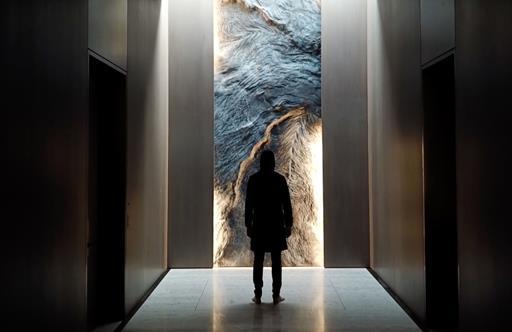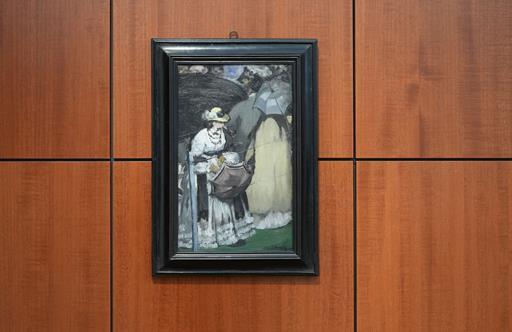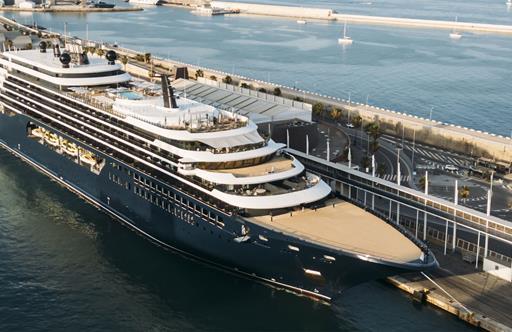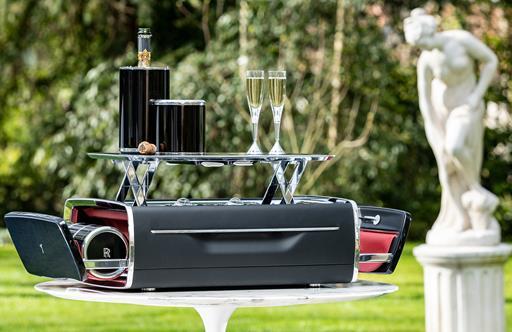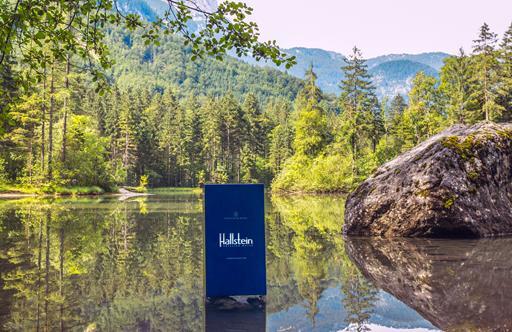The Art of the Après Safari
Leave your wristwatch at home. Bawe Island, a dreamy, post-safari retreat just a few kilometres off the coast of Zanzibar, marches to its own beat.
Our dream was to combine Italian design and elegance with the spirit and joy of life in Zanzibar, a place that is deeply anchored in my family’s heart,” says Alex Azzola, the co-owner of Bawe, the recently opened private island escape that is like nothing else in Africa.
Azzola comes from a family of hoteliers – his parents founded the first resort in what has become the Cocoon Collection in 1980 in Sri Lanka – and he has shepherded two other properties to success on Zanzibar. For Bawe, the dream of an expansive private island that would showcase nature just as delicately as it would take care of guest comfort took shape slowly: it took many years and involved deep commitments to both sustainability and the local community.
 (photo: Martin Kreuzer)
(photo: Martin Kreuzer)
From the start, Azzola knew that sustainable infrastructure was key to the development of Bawe, which now boasts 70 villas across 30 hectares of tropical splendour. As such, he built Zanzibar’s largest solar plant as part of the resort, along with cutting-edge desalination and wastewater treatment facilities. There’s also a zero-plastic intent (not quite yet achieved, thanks to artificial vertical gardens in places) and a massive commitment to the local population, including new modern housing and private docks for the local fishermen.
Most recently, in February of this year, the waters immediately surrounding Bawe have been protected by the Zanzibar government as the Changuu-Bawe Marine Conservation Area. It’s an important step in Azzola’s vision of deeply pairing the concepts of luxury and sustainable conservation.
 (photo: Martin Kreuzer)
(photo: Martin Kreuzer)
The island is just a 15-minute motorboat ride from Stone Town, the charming, Unesco-listed core of Zanzibar City, the capital. Arriving to its shores, you’re greeted by an almost life-size elephant sculpture surveying the path from the jetty to the reception, a clever homage to the safaris that entice visitors to mainland Tanzania. Bawe has positioned itself as the natural next leg for the safari traveller, a place to recoup after the thrills of the Serengeti, a hike up Kilimanjaro or the bustle of Zanzibar City. There is a pair of rivals – to the south, there’s Thanda Island, now run by the Jumeirah group, and Mnemba Island, from &Beyond, to the northeast – but none within such easy reach of the mainland.
And none with the same cosmopolitan vision that pairs European furnishings with direct access to the natural wonders of the tropics. From the 200sq m Sunrise Villas to the expansive (and aptly named) 240sq m Sunset Suites, each of the accommodations is spacious and deeply comfortable. The overwater Lagoon Suites appear to float high above the waves, and there is no denying the opulence of the three-bedroom, two-storey Sultan Palace, an ultra-private oasis for families or groups that makes a showcase of its Etro sofas, among other Italian pieces.
 (photo: Martin Kreuzer)
(photo: Martin Kreuzer)
Time passes slowly on Bawe. Guests spend their days lounging beside their own private pools, a personal chef and butler just a WhatsApp message away. For those looking to boost the adrenaline, there’s scuba diving in the spectacular local reef, a host of other watersports, private sailing cruises, or terrestrial pursuits like tennis, padel and cycling.
Azzola’s vision of a luxe retreat that also embraces its tropical surrounds can lead to some paradoxical moments: the Frette linens, Dyson hairdryer and other creature comforts all ensure guests can maintain the highest standards, but the outdoor bathrooms mean that while you do get lovely birdsong to accompany your shower, some might find the inability to escape the humidity a bit taxing.
 (photo: Martin Kreuzer)
(photo: Martin Kreuzer)
There are four dining options with offerings that match the cosmopolitan theme of the resort – from teppanyaki to pizza – and there’s a regular local showcase evening featuring Zanzibarian dishes alongside dancing and fire shows that sits right on the knife edge of charm and kitsch.
The true attraction here is simple, uninterrupted repose. At the minimalist spa, you’ll fall in love with the African Potato fragrance during a soothing massage, while the winding snake of water that is the resort’s main pool seems to merge into the sky itself. This, after a long trip through mainland Tanzania, proves itself to be another kind of safari, one that unfolds with languid, dreamlike calm. Time bends to your will, and slowly you reclaim your sense of peace and balance – something altogether too rare in our modern world.
 (photo: Martin Kreuzer)
(photo: Martin Kreuzer)
Tanzania 101
The extraordinary variety of natural splendour in Tanzania – from Africa’s highest mountain to flamingo-inhabited wetlands – means that your journey through the country is limited only by your imagination. Here are three itineraries, each offering different perspectives on the multifaceted country and all ending up with the splendid seclusion of Bawe Island, where you can process the sights, sounds and adventures on a truly epic scale.
 (photo: Unsplash)
(photo: Unsplash)
The Classic North
By far Tanzania’s most popular safari destination, your two lodestars here are Serengeti National Park (where you can witness the Great Migration) and Ngorongoro Crater, home to about 28,000 wildlife species, including the black rhino. There’s also Tarangire National Park, where the namesake river draws elephants in vast packs, and Lake Manyara, with its flamingos and tree-climbing lions. Keen hikers will want to scale Mt Kilimanjaro, Africa’s highest peak, or nearby Mt Meru, which is 1,329 metres lower but more technical – and much less crowded. There are plenty of top-notch hotels to choose from, including the new exclusive-use Singita Kilima, the 10-suite &Beyond Lake Manyara Tree Lodge and the sustainably minded Gibb’s Farm in Karibu.
Westward Ho!
Within the country’s lesser-visited western reaches lies the remote Katavi National Park, where just a few thousand people visit each year (compared to hundreds of thousands at the better-known parks to the north). Camps are limited – and tented in an old-fashioned way, like at Chada Katavi – but offer a front-row seat to astonishing wildlife, from herds of zebra and topi to hippos and crocodiles in the dry season. Meanwhile, the Mahale Mountains, which run alongside Lake Tanganyika, are one of the best places in Africa to see chimpanzees – it’s where Jane Goodall spent much of her career, along with Gombe National Park farther north along the lake. Being so far off the beaten track, the camps here, like Greystoke Mahale, are well integrated into the surroundings and also offer the chance to kayak, and swim under waterfalls.
Southern Charms
If you’ve seen the Big Five, consider an off-grid trip that takes in Tanzania’s less-heralded, but no less impressive, wonders. Start east, in the country’s largest city, Dar es Salaam, whose enormous cultural riches can be opened up by the right guide. Then, trade the urban cacophony for the laughs of hyenas and the dawn chorus of birds at the giant Ruaha National Park, which is perhaps the country’s best-kept secret. From the base of Jongomero Camp, the vast expanses are the meeting point for eastern African and southern African flora and fauna, with a staggering range of species, including elephants, buffalos, lions and cheetahs, as well as nearly 600 species of bird. A short flight away in the Unesco-listed Nyerere National Park, you’ll cosy up to Lake Nzerakera at Siwandu Camp and witness undisturbed landscapes and a huge variety of species – and a variety of ways to see them as well, including by boat and on foot.
Planned to Perfection
It is possible to arrange these circuits directly with hotels and airlines, but using a tried-and-tested tour operator can optimise planning and avoid headaches. Both Scott Dunn and Jacada have ample experience planning bespoke Tanzania itineraries, while Journeys By Design and Yellow Zebra Safaris focus only on safaris.
Bawe Bound
Flights alight at Zanzibar’s Abeid Amani Karume International Airport several times a day from Dar es Salaam, as well as a number of global hubs. Following a 20-minute ride to the port, Bawe Island is just a 15-minute speedboat voyage away.


